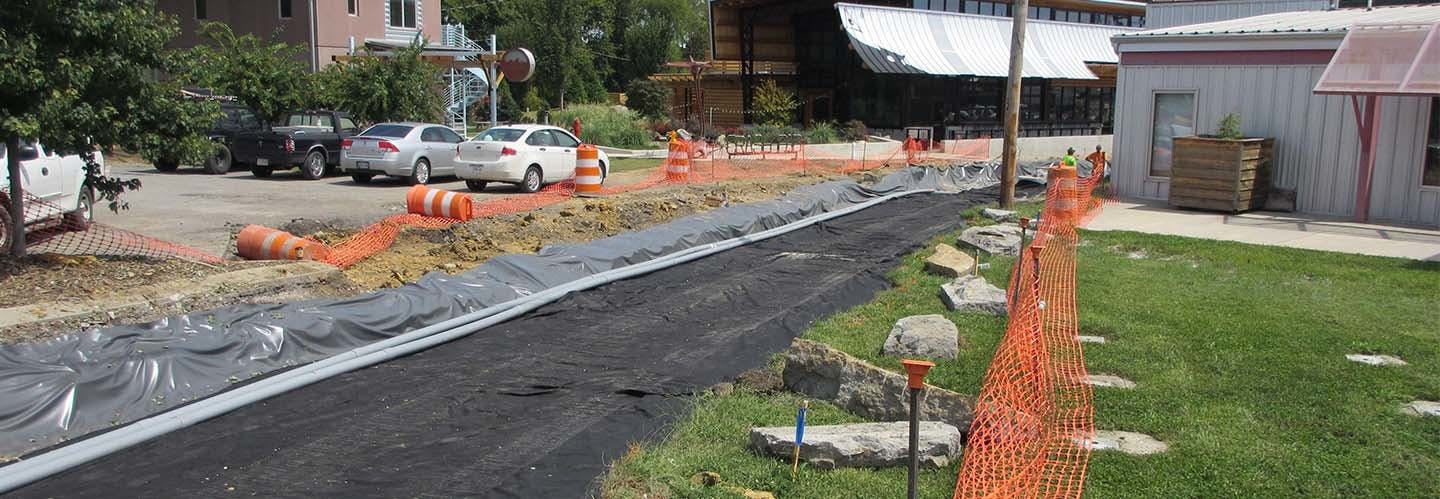Designing Roads to Minimize Future Maintenance Costs
Posted on 6.30.2021 by Mark Marienfeld, P.E.
The cost to maintain roads, such as filling potholes and repaving roadways, averages $15,952 per lane mile each year according to the Reason Foundation.
City and county administrators are under pressure to maintain smooth, user-friendly roads, yet limited resources and increasing populations make it challenging to maximize budgets. Roads built by private entities, such as roads for subdivisions and private developments eventually become part of a city’s or county’s budgets. In many jurisdictions, these roads are built by developers in compliance with standards, but may be lacking in innovation and quality control. Once built, these roads become part of the city/county’s jurisdiction, which means the city/county is then responsible for all future maintenance. The problem is that when the public agency inherits a road that is structurally damaged, it also inherits the maintenance cost.
Many of these roads are asphalt or concrete pavements, sometimes placed directly onto a treated subgrade or an unbound aggregate base foundation layer. Commonly, these aggregate base foundations lose their structural strength when the subgrade soil mixes with the aggregate base. This is caused by moisture and construction traffic loading.
Once subgrade soil migrates into the aggregate base, the base loses more than half of its strength and no longer has the designed structural bearing capacity to support the pavement. Subgrade contamination of the aggregate base also prevents water drainage, allowing pore water pressure to build under traffic. This further accelerates the structural damage to the road. Due to loss of base support, the pavement will begin to crack and rut, causing premature pavement failure. These types of failures, and the cost to repair them, can easily be avoided if the roadway is designed with a Permanent Road Foundation (PRF).
A PRF is the combination of a nonwoven separation/stabilization geotextile and a competent aggregate base. The nonwoven geotextile is placed directly onto the subgrade soil before the aggregate base layer. The fabric permanently maintains the separation between the layers and maintains the full design thickness and strength of the aggregate base foundation layer. This enables the pavement to achieve its full design life with minimal maintenance. A roadway design that utilizes a PRF minimizes the chance that a road will ever need a total reconstruction. Surficial treatments that are fast and economical should be all that is ever needed. This minimizes maintenance costs and congestion and downtime caused by construction.
In addition to reduced maintenance costs, there are other proven benefits of including a nonwoven geotextile at the subgrade/aggregate base interface. The high friction of the nonwoven confines and restrains the aggregate base to increase its bearing capacity by an average of 80 percent. Nonwoven geotextiles feature high vertical and horizontal permeabilities that provide instant relief of pore pressure. As heavy traffic loads impact the road, the nonwoven allows water to escape laterally through the geotextile so that pressure does not build. The separation function also allows the use of a more open, free-draining base aggregate.
Commonly, the benefits of using a nonwoven geotextile allow pavement design engineers to use less aggregate in the road’s structural section. This reduction in aggregate can save up to $40,000 per lane mile. The cost of the nonwoven geotextile is less than one inch of aggregate, yet has been shown to save four to six inches of base aggregate from contamination. This cost savings more than pays for the cost and installation of the nonwoven geotextile.
This technology should also be used beneath any road where a total reconstruction is necessary. It’s likely that the road failure is due in part to the loss of foundation support. To ensure better performance, it’s advantageous to rebuild using a design that establishes a permanent foundation.
A PRF is a cost-effective and sustainable way to improve your road network and lower future maintenance. To ensure that roads are being built using this proven method, state and government agencies can add a requirement for a nonwoven separation/stabilization geotextile in roadway building codes. This will ensure that any new roads built, whether publicly or privately funded, will incorporate design practices that mitigate maintenance, reduce cost and increase the longevity of the road.
Nonwoven geotextiles are the most widely used form of separation/stabilization and they are generically specified in AASHTO M288, the national guideline specification for geosynthetics. The best candidate geotextile for this application is the AAASHTO M288 Class 1 >50% elongation (nonwoven).
For more details and research supporting the benefit of using a nonwoven geotextile to create a PRF, read Propex’s Engineering Bulletin EB125. Additionally, Propex offers a webinar on the PRF technology that includes 1 PDH credit for attendees. An online version of that webinar is available here or you can request an in-person or virtual webinar here. If you have any questions, the engineers at Propex will be happy to help you work a specification into your building code/ordinance.
Interested in PFAS-Free Plastics?

